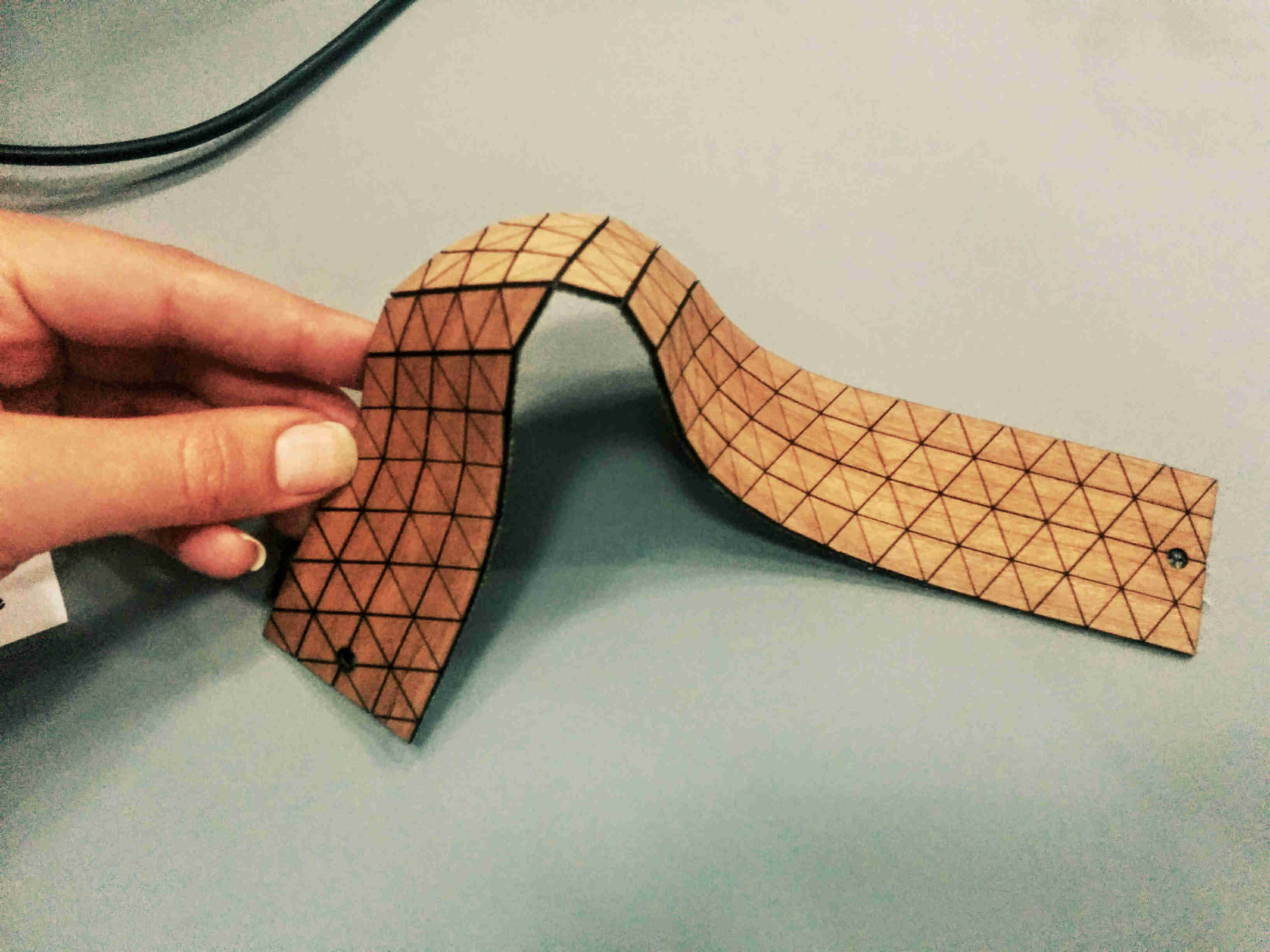Week 12: Molding & Casting
Making a Cyborg Bracelet
For the assignment we have to design and make a 3D mold. I will make a prototype for my final project: a silicon bracelet with a one negative and two positive molds to embed a pcb board and two small copper boards that function as galvanic skin sensor. The dimensions are rather huge: the pcb board is 15 cm long, as I include NEOPixel LED stripes. The design follows an "transparent technology" approach, aiming to leave all parts visible for the user.
Materials & Tools
Software: Rhino
Matter: Foam for Milling, Silicon "FormSil25Pro" and catalyst liquid from FormX (mixing: 100:5 (weight of silicon x 100 : 5 = amount of catalyst)
Machines: Rolland SMR-20; radial saw
Overview - Working Process
* generate Rhino design of molding form
* cut mold in two pieces in Blender
* mill form in SMR-20
* correct form with radial saw
* wax the mold
* glue top/button leyer together to have only two instead of four parts
* prepare casting workspace (scale, mixing stick, gloves, colour pigment): 130g silicon matches 6.5g catalyst liquid
* distribute silicon evenly in form
* stick two forms together, tape
* drying for 14 h
* opening mold, done
Design Casting Form
I drew a rectangle in Rhino in the bracelet meassurements (150mm x 250mm x 5mm) and extruded planar curve. I then added three more rectangles, extruded the planar curves, moved them into the proper positions and ran the boolean difference command. I set an offset for the outer form of the mold to allow for the casting.
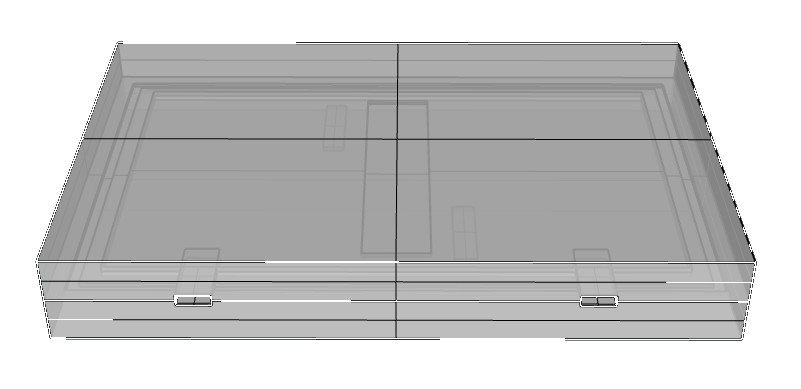
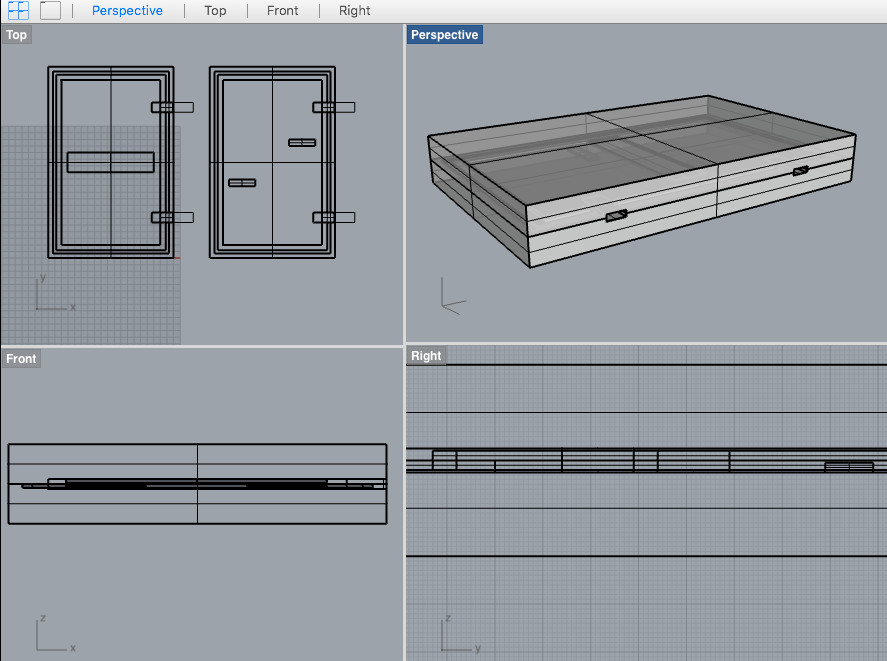
Experiment: Mill the Casting Form
Because of the larger measurments and the busyness of the Shopbot milling machine, we split the model in four parts (2 and 2) in Rhino, saving 4 .stl files in order to use the small Rolland mill. Instead of wax - a pricy material of which none is left - we use foam, that I covered with a wood wax (brand: "Alex" Cera Incolora, para todo tipo e madera) to prevent the foam from soaking up all the silicon. We don´t know if this works, it´s an experiment.
Ferdi has tried the wood wax/foam form with plastic as casting material. it´s not easy to get the plastic out of the form, and the foam easily breaks. Now we try with silicon!
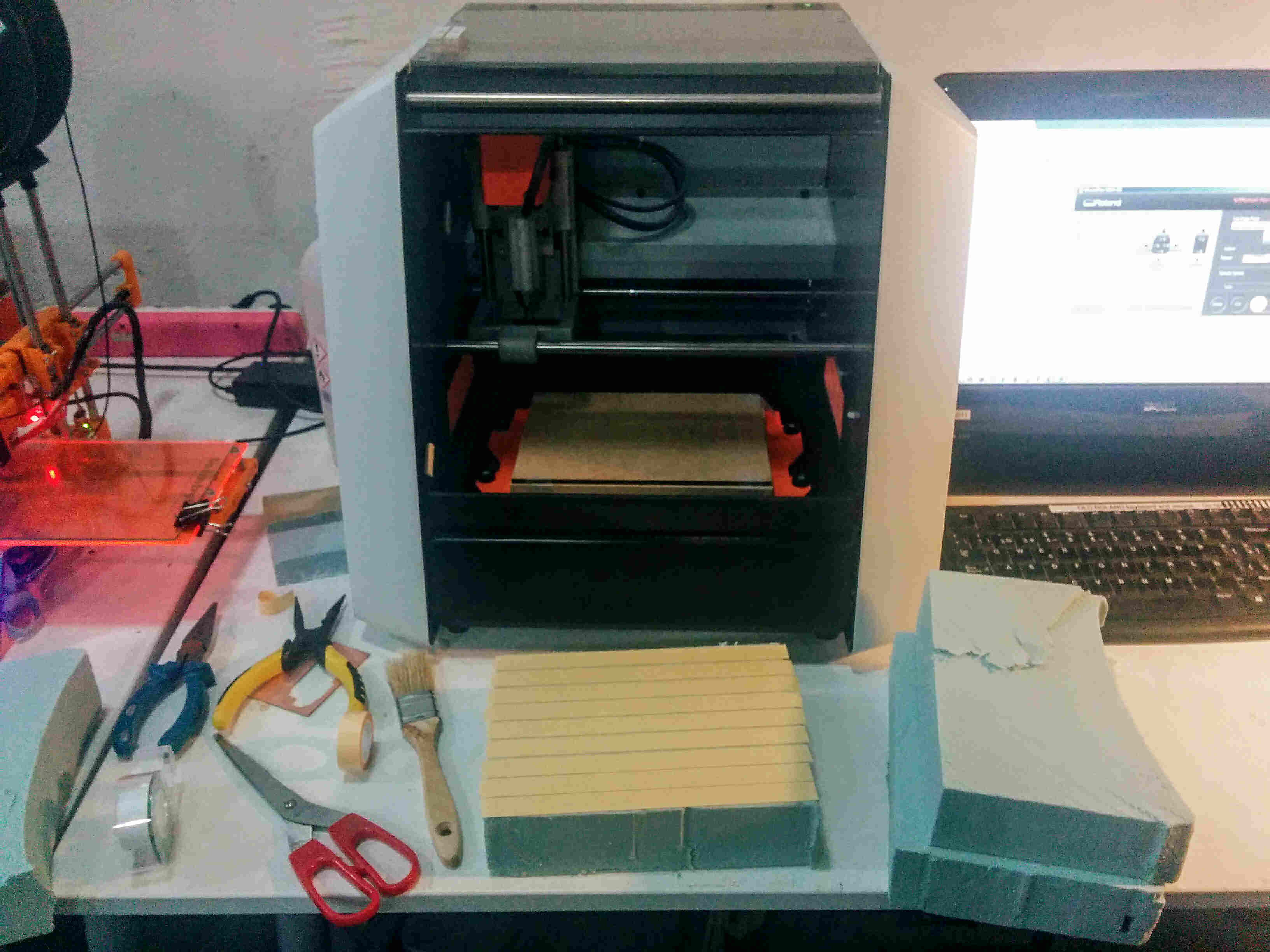
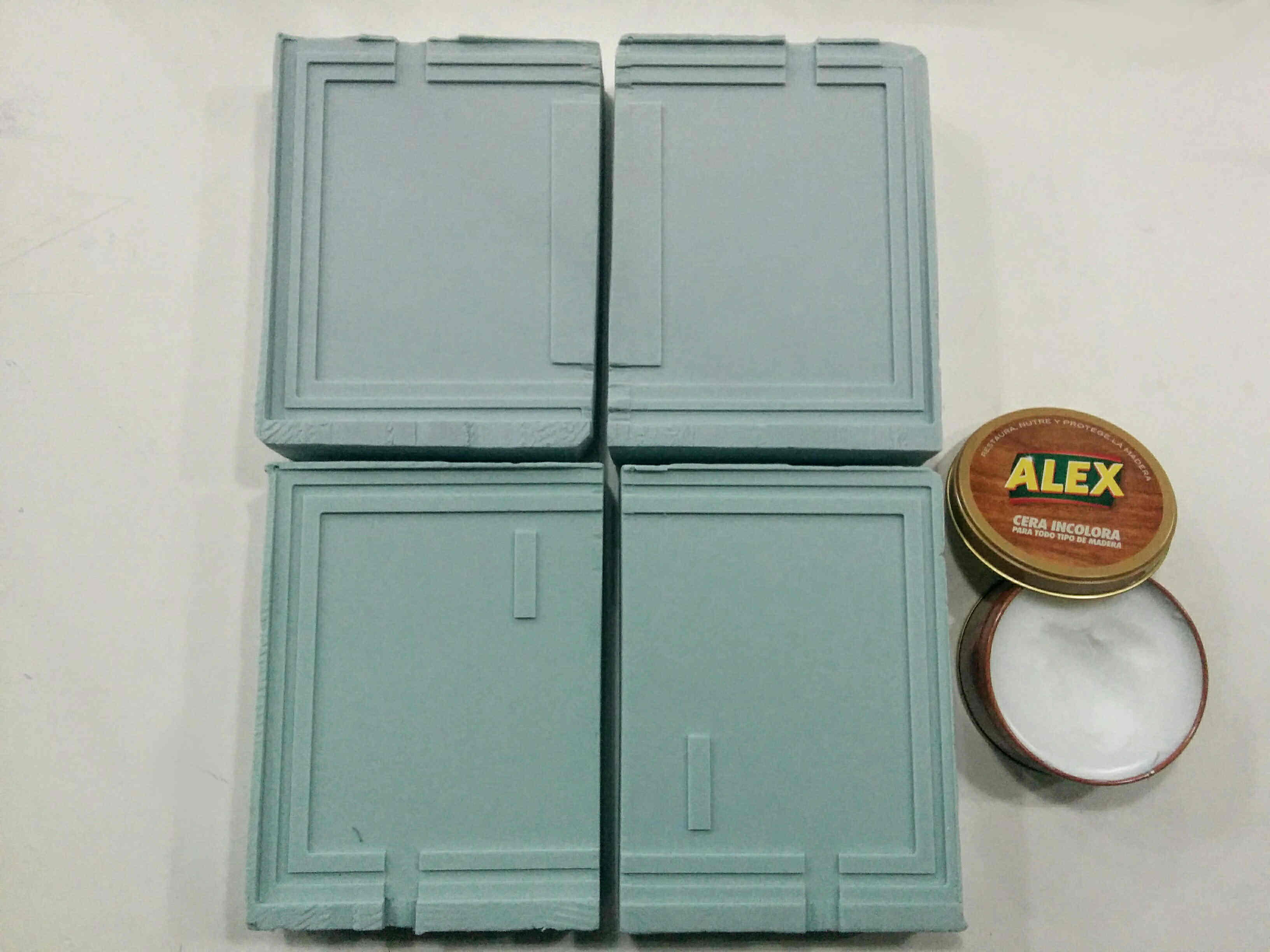
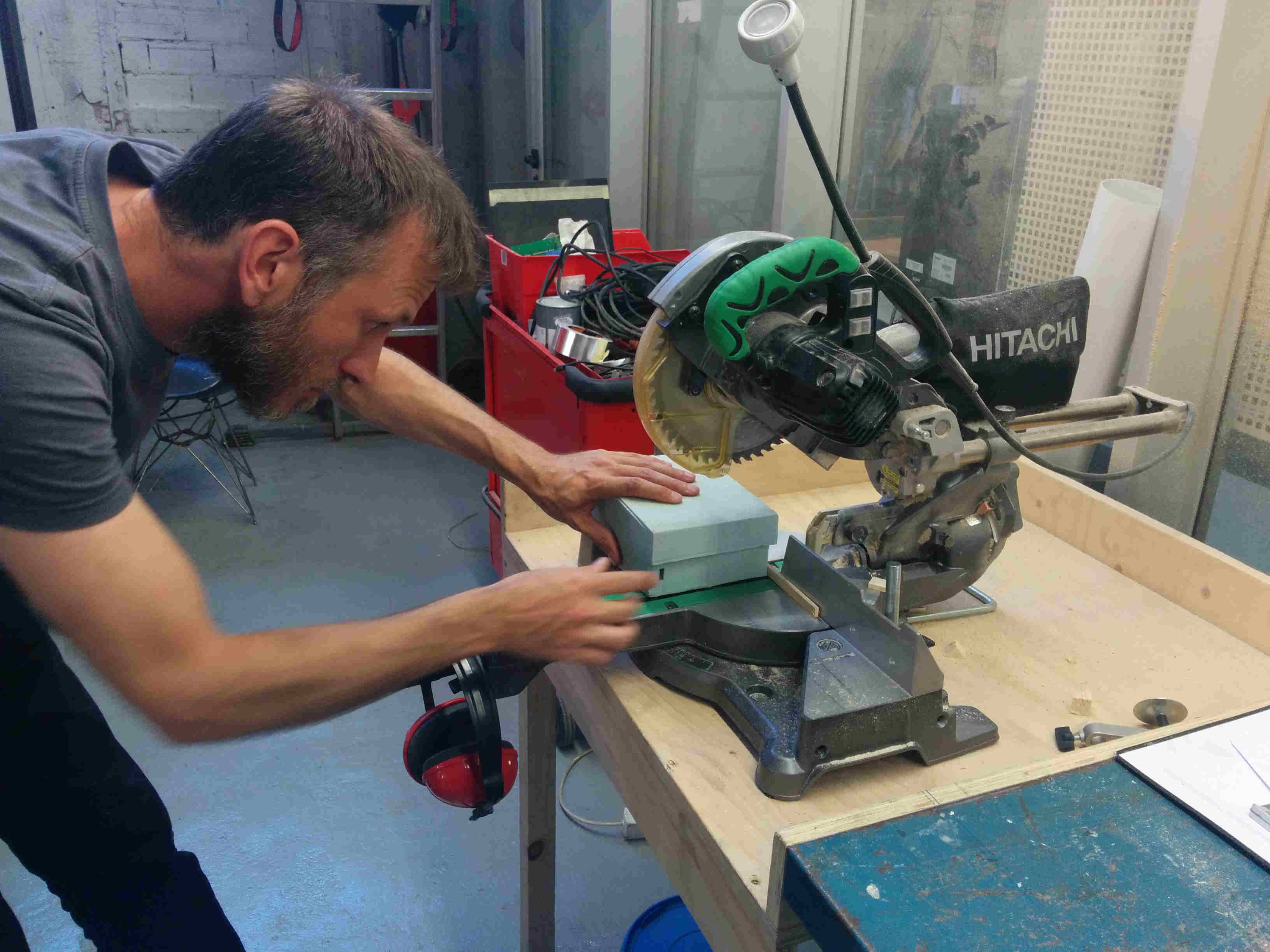
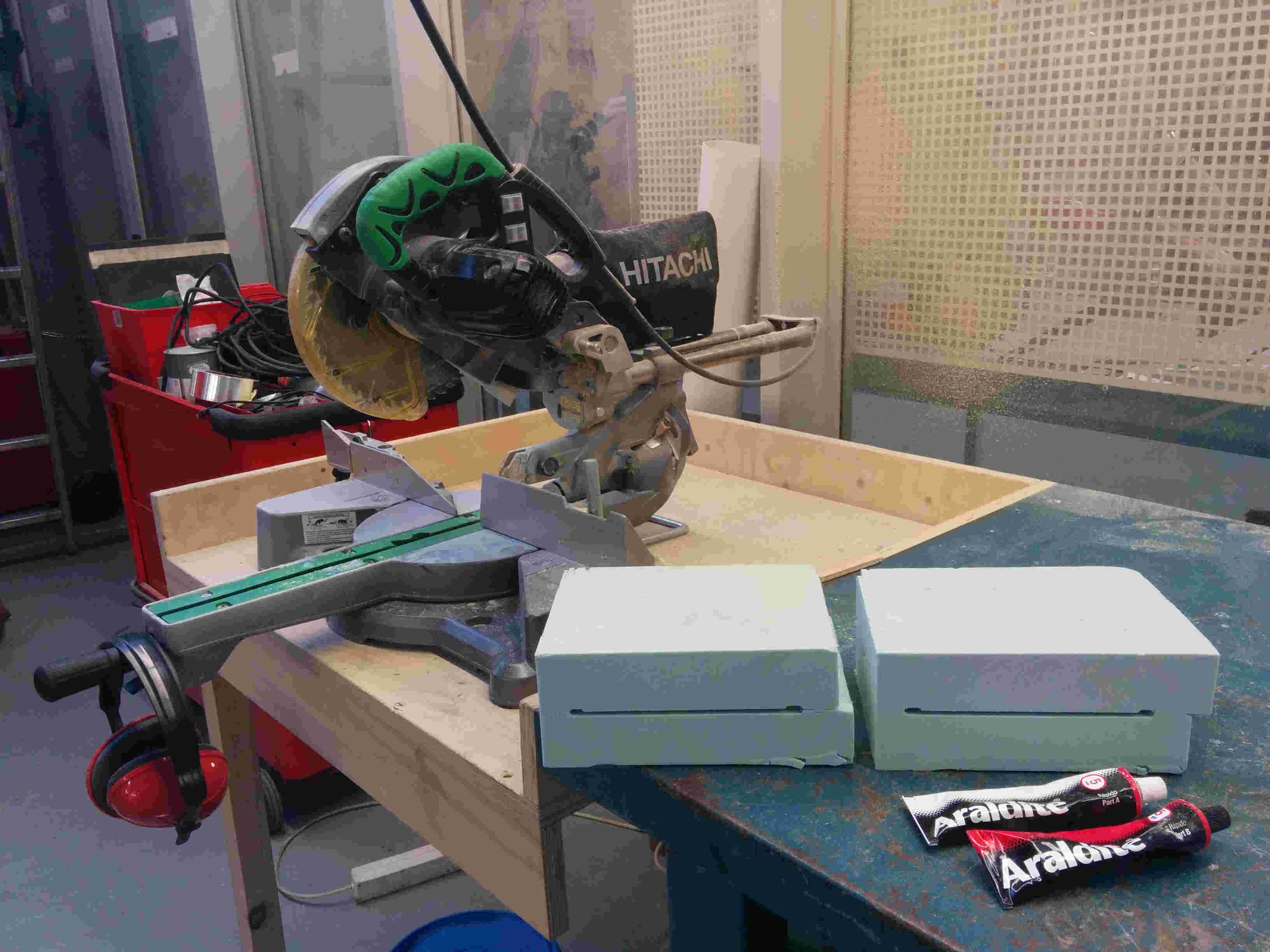
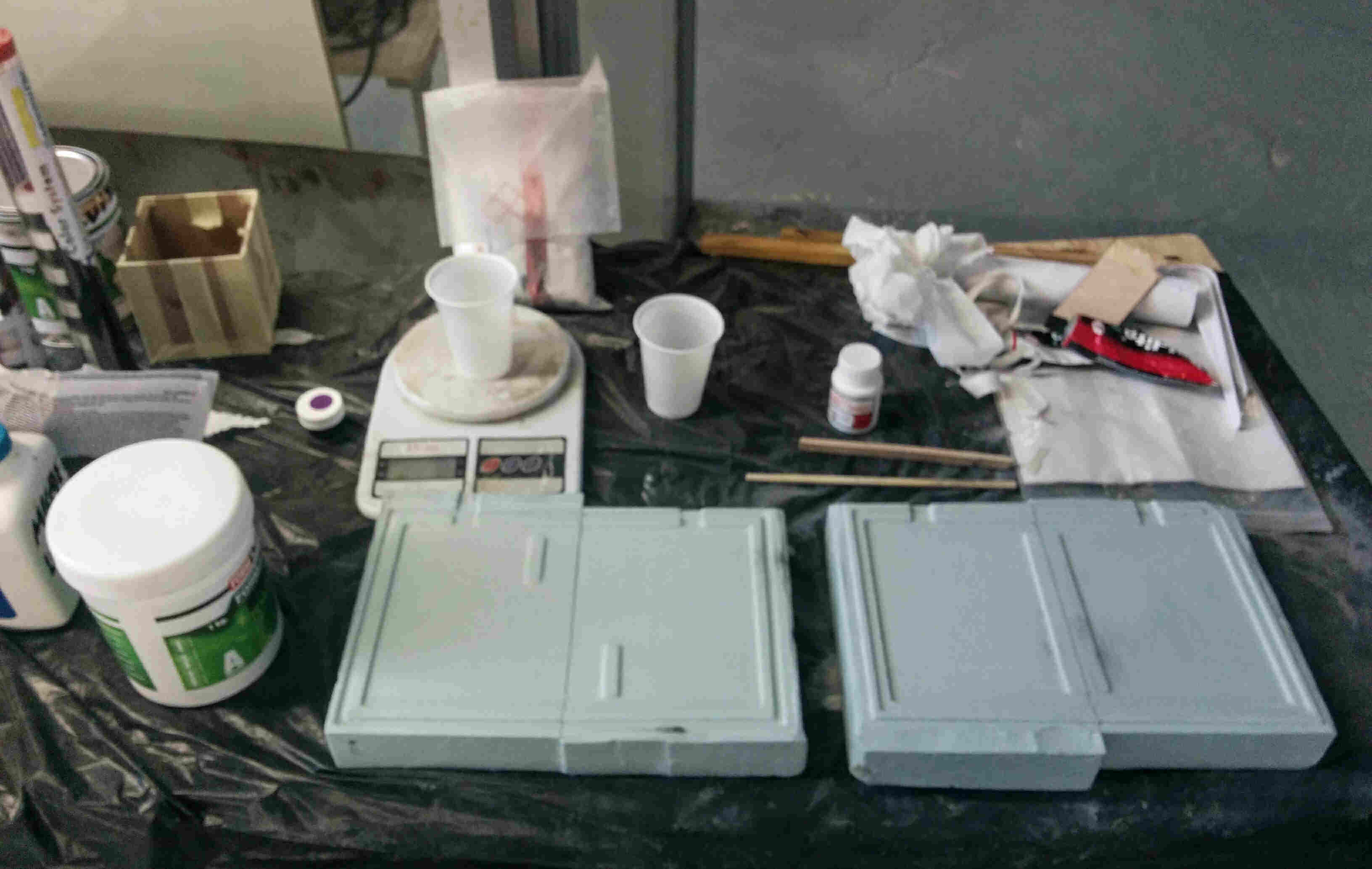
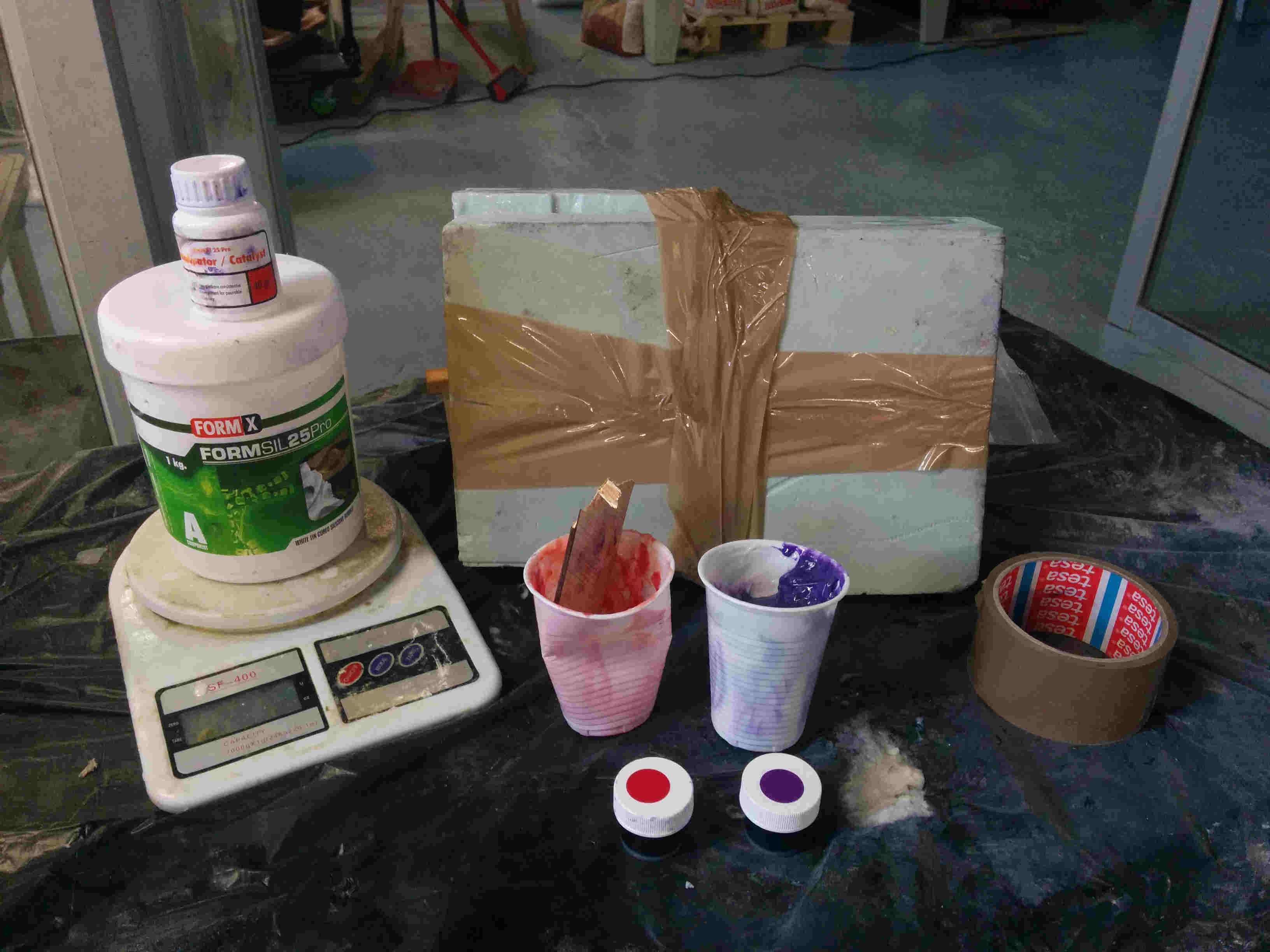
The Result
![]()
![]()
![]()
Second Thoughts: Silicon Bracelet?
Will not use silicon for the final project bracelet, instead I plan to use leather. I will make a "protection box" that I can easily put on my final board to protect it from clumsy fingers, dust and stuff. Additionally, Anastasia in the Fab Textile experimented with wood patterns on a jeans textile. The patterns are flexible and look fantastic. As I need some thickness of material to allow for the board and sensor pockets, I might combine the leather with the wood cuts.
